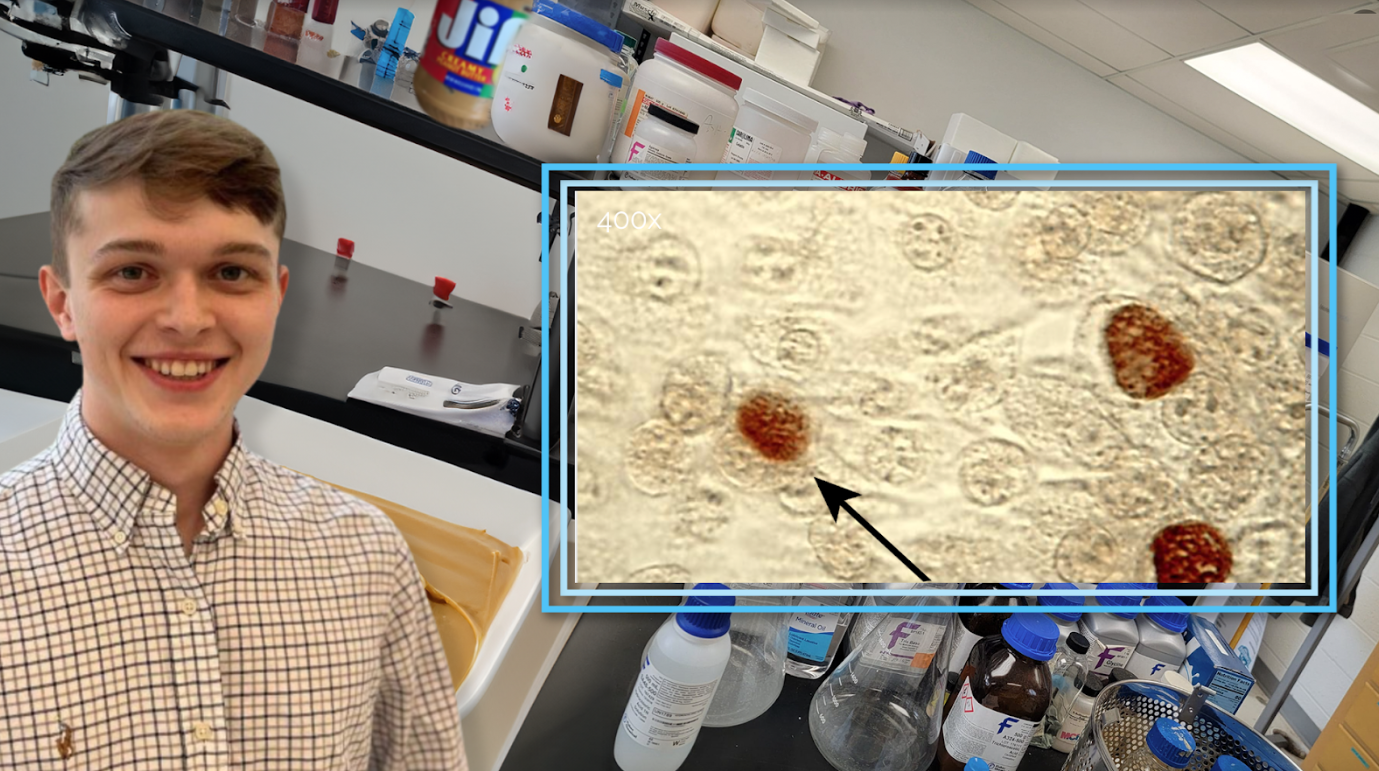I have been researching coral pathogens at my university for nearly three years. For several months, the Reef Builders team has been preparing for this moment. This is a summary of my research – this is the cure for brown jelly disease.
The Science
Brown jelly disease is a polymicrobial disease state that arises from external stress. Because of this, there is no “root cause,” so to say, besides the chemical and biological instability that leads to it. Abiotic stress leads to the dissociation of several core symbionts from the coral’s holobiont, which then creates a power vacuum and consequently leads to an internal dysbiotic event. A side effect of this is a shift in metabolite concentrations since the populations of typical families that consume these byproducts are changed by the stress event. This then leads to the accumulation of several key info chemicals that recruit external bacterial pathogens. This results in a complex “pathobiont” where the coral has to deal with internal and external immune challenges simultaneously.
So, how do we go about fixing this problem? Enter the savior: peanut butter. Peanut butter is a chemically diverse colloidal emulsion that is typically found in one’s pantry. It contains a mixture of many fatty acids and proteins. A rich diversity of fats, including but not limited to monounsaturated, polyunsaturated, and saturated fats, provides a plethora of different carbon sources.
The most critical peanut butter component for our application is a high percentage of linoleic acid (LA). Linoleic acid is a polyunsaturated omega-6 fatty acid that has been proven to have antibacterial and antibiofilm properties, primarily affecting gram-positive species.
On average, 32 grams of peanut butter has around 6 grams of LA, which represents the most economically viable option for obtaining LA on the market. After discovering the potential of LA as well as an economically viable source of it, I began to dig deeper and determine if any existing studies had been done so I could find a starting dosage.
One study measured biofilm density with the addition of linoleic acid at varying concentrations and found a concentration of 100 ug/mL, which was able to halt biofilm formation nearly completely. I then chose this as my starting dosage.

At the time, I had an active system with an outbreak of brown jelly, so I decided to risk it all for the sake of science. My system was 100 gallons in total. The desired concentration of LA was 100 ug/mL. There are 3785.41 mL in one gallon. 100 ug times 3785.41 = 0.378541 grams. There is a 16:3 ratio of peanut butter to LA, with 32 grams of PB containing, on average, 6 grams of LA. Thus, to dose the desired amount in my 100-gallon system, I needed to add 2.019 grams of peanut butter. I then did the unthinkable and added peanut butter to my system.

After several days, my system returned to normal, and the jelly stopped. Since this initial experiment, I have tested the PB approach on around 420 systems. I conducted an Aquabiomics test at several time points to illustrate shifts in the microbiome. Below is an average of the data from all 420 systems.

You can see a massive shift in the concentration of several pathogenic families during a BJD infection vs. a return to a reasonably healthy microbiome post-PB. This represents the largest sample size for a successful treatment for BJD and is a fraction of the cost of traditional antibiotics.
I couldn’t have done it alone
Several prominent figures in the industry took part in this study and assisted me in dialing in the dosing of peanut butter. Richard Ross, Jeremy Gay, Raj Shingadia, Sara Stevens, Remy Hoesly, Seth Mccullough, and Chris Meckley played a crucial role in developing this methodology, which we confidently call – PB no J.
All corals I now sell are prophylactically treated with peanut butter. I decided after seeing anecdotal results adding peanut butter that the science was settled and that this represented the silver bullet to an infinitely complex disease state at the edge of human comprehension. I then decided that despite having no clear description of the pathogenic pathway through which Brown Jelly Disease arises, I would push this information to the public and encourage them to dose peanut butter in their systems as well. Additionally, I have no longitudinal data to support any of this. I now sell peanut butter on my site – instead of trying to master the basics and keep your system stable, you should buy my peanut butter product because a lot of people on Instagram have had success with it.
*DISCLAIMER* This is an April Fools Joke – Please DO NOT dose your aquarium with peanut butter!
https://www.tandfonline.com/doi/full/10.1080/08927014.2020.1730333




Great work, Salem!
Ah ha, makes sense that omega fatty acids would play a role in good coral health just like us. Just like using oxylinic acid i believe but better!?! Awesome work to Salem and the rest.